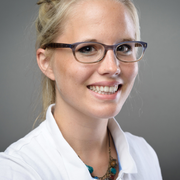Day 1 :
Keynote Forum
Ahmed Halim Ayoub
Egyptian society of oral Implantology, Egypt
Keynote: 4D Concept and Immediate Implant Placement

Biography:
Abstract:
Keynote Forum
Philine H Metelmann
Greifswald University, Germany
Keynote: Cephalometric assessment of craniofacial structures in patients with cleft lip and palate

Biography:
Abstract:
- Periodontics| Restorative Dentistry | Dental and Oral Health | Oral and Maxillofacial Surgery
Location: Madrid, Spain

Chair
Koleilat Mohamad
Koleilat Mohamad, Head of Periodontic Division member of the OMF team –Rashid hospital Dubai health authority, UAE
Session Introduction
Islam A Abd El-Aziz Ali
Mansoura University, Egypt
Title: Microleakage and marginal adaptation of three root-end filling materials: In vitro study
Biography:
Abstract:
Menatalla M. Elhindawy
Masnoura University, Egypt
Title: Biological impact of Curcumin on tongue ulcer healing in induced diabetic rats q
Time : 14:20-14:50
Biography:
Abstract:
Ritu Duggal
CDER All India Institute of Medical Sciences, India
Title: Skeletal and dentoalveolar effects of Twin-block appliances in the treatment of Class II malocclusion: finite element analysis
Time : 14:50--15:20
Biography:
Abstract:
Walid Odeh
German board in oral Implantology, Jordan Network
Title: Difficult cases and their clinical solution
Biography:
Abstract:
Mohamed Salea Elarbi
Ali Omar Askar (AOA) Neurosurgery University Hospital, Libya
Title: Why is the aetiology of facial bone fractures in libyan childrens diffrent
Time : 16:10-16:40
Biography:
He is associate professor of Department Oral Maxillofacial Surgery at Ali Omar Askar (AOA) Neurosurgery University Hospital, Libya.
Abstract:
Ephraim Tzur
Assaf Harofeh Medical Center, Israel Panel Disscussion
